(MENAFN- Asia Times) GIMPO, SOUTH KOREA It was an unusual but striking location for a conference: A hilltop observatory, patrolled by camouflaged marines and overlooking an enemy state just 1.4 kilometers distant.
The“Aegibong Peace Ecopark” in Gimpo, a township that is a northwestern suburb of Seoul, provided a perfect site – and its views into North Korea a perfect backdrop – for local politicians, dignitaries and foreign ambassadors conferring Tuessday.
The conference took place just two days before the facility is opened to the public on October 7.

The conference underway in South Korea – with North Korea plainly visible through the window. Photo: Andrew Salmon/Asia Times
It also took place just one day after cross-border communications hotlines between the two Koreas resumed operations . That development has sparked hopes here for a resumption of high-level North-South dialog in the waning months of the engagement-centric Moon Jae-in administration, which exits office next May.
The brand-new facility boasts observatory gallery and decks overlooking an estuary into North Korea. While it promotes eco-tourism and touches on ancient Korean history, it has a broader, educational mission.
The generation of South Koreans who experienced the 1950-53 war and suffered the agonies of being divided from their family members in the North is dying out. That means a slackening of the political pressure to pursue inter-Korean engagement.
To counter this lack of interest, the center is designed to bring the nation's youth face-to-face with the tragedies of division, while also making them aware of the importance of peace and the possibilities of what a former South Korean president has compared to hitting the jackpot: reunifying with the North.
The facility has a potentially huge catchment: It lies just a 40-minute drive from central Seoul, with its population of 10 million. That proximity and geopolitical reality may surprise many residents of the sprawling, high-tech metropolis.
“I had no idea North Korea was this close,” a long-term Seoul resident visiting the center told Asia Times.
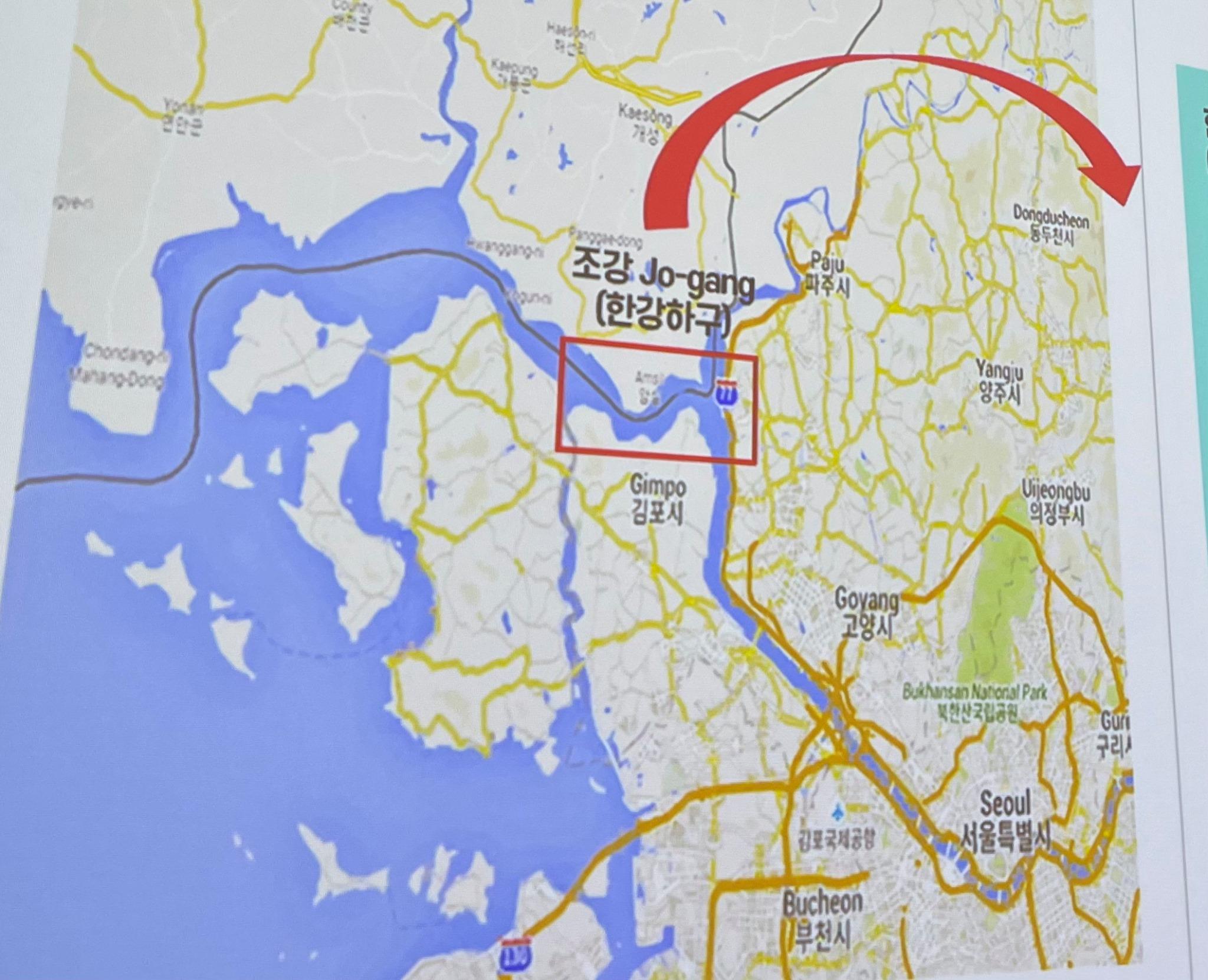
Map showing location of Aegibong (in red rectangle) in the north of Gimpo, northwest of Seoul. The North-South demarcation is in the river. Photo: conference slide/Andrew Salmon/Asia Times Northern exposure The facility is located in Gimpo, a middle-class, Seoul suburb that is also the site of South Korea's largest domestic airport. Gimpo's northern rim is the estuary where the Imjin River, which flows down from the north, and the Han River, which flows through Seoul, converge and enter the Yellow Sea.
This waterway was a lively maritime trading hub for centuries, but today, it is eerily silent and entirely empty of shipping or even small boats – for across it lies the mysterious and inaccessible North Korea.
So close are the two Koreas here that it is an easy matter to capture the northern and southern banks of the river, held by the two competing states, in a regular camera's lens.
Under the terms of the 1953 armistice that ended the 1950-53 Korean War, the waters here are officially a“free zone” for boating and fishing. But as the two Koreas have been unable to agree on actual usage, no vessels from either side ply its waters.
So they meander, untouched by any hulls, through the scenic hillscapes like a slow-motion film from yesteryear.
Across the water can be seen green rice fields, a village of drab three-floor concrete apartments. a monument and clutches of North Koreans working in the fields This is not the DMZ. The waterway forms the de facto demarcation line.
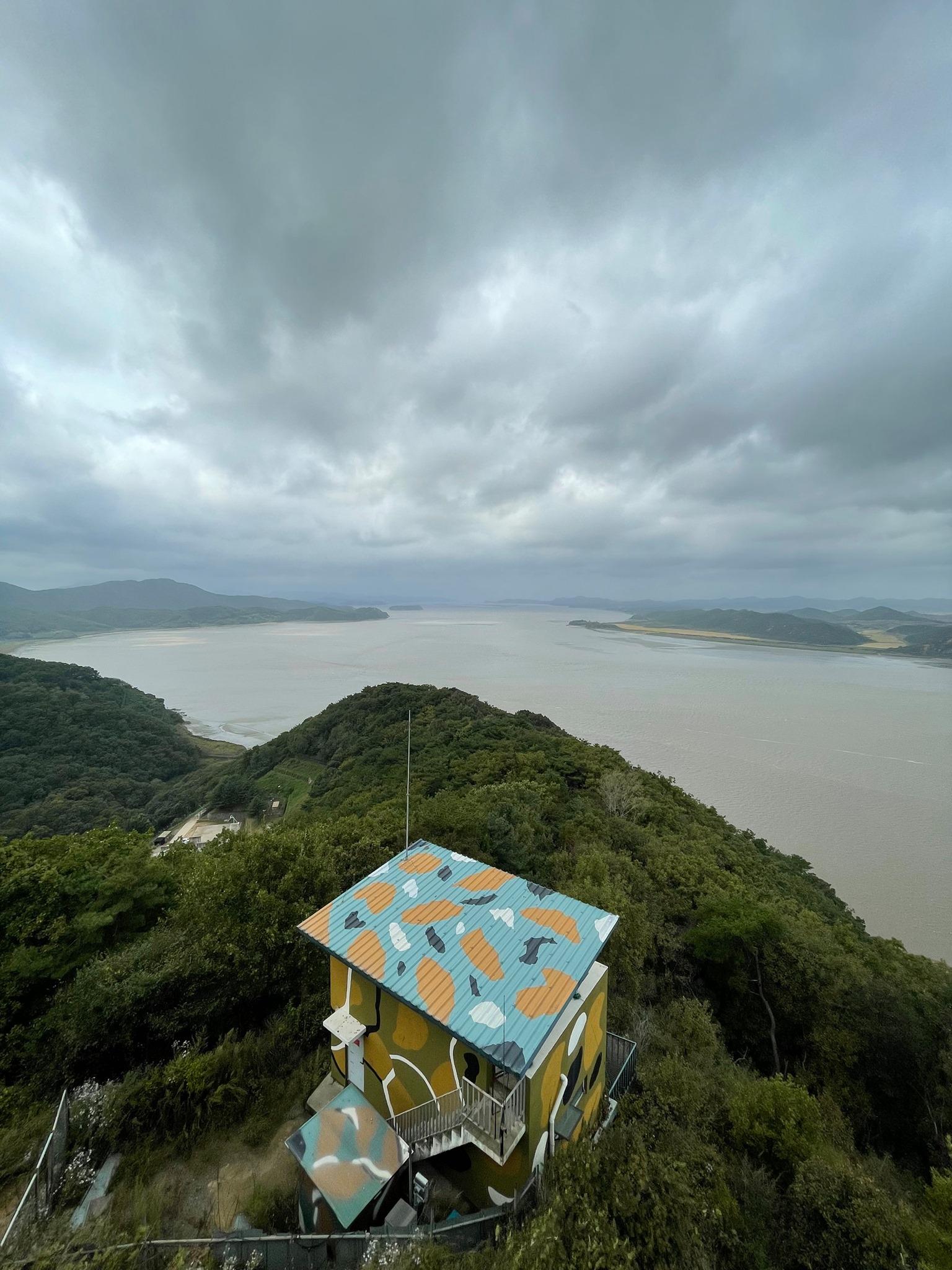
A South Korean Marine position, just below the observatory deck. South Korea owns the left bank of the river; North Korea, the right. Photo: Andrew Salmon/Asia Times
But while the barbed wire that otherwise coils its way across the waist of the divided peninsula is not in evidence, there are plentiful signs of military activity. A riverside North Korean guard post can be clearly seen, as can trails dug for military use along the ridgelines.
The Peace Ecopark – it is named after a famous nearby peak, Aegibong – lies on ground occupied and patrolled by armed, camouflaged troops of South Korea's 2nd Marine Division. However, civilian road access is permitted, for those who make prior reservations.
Originally created as an observatory in 1978, Aegibong won fame/notoriety when the large tree it emplaced and illuminated on past Christmases drew the ire of the North – which threated to destroy it with shell fire. That proved to be bluster. The dire outcome never transpired. Even so, the aging center was closed for extensive renovations.
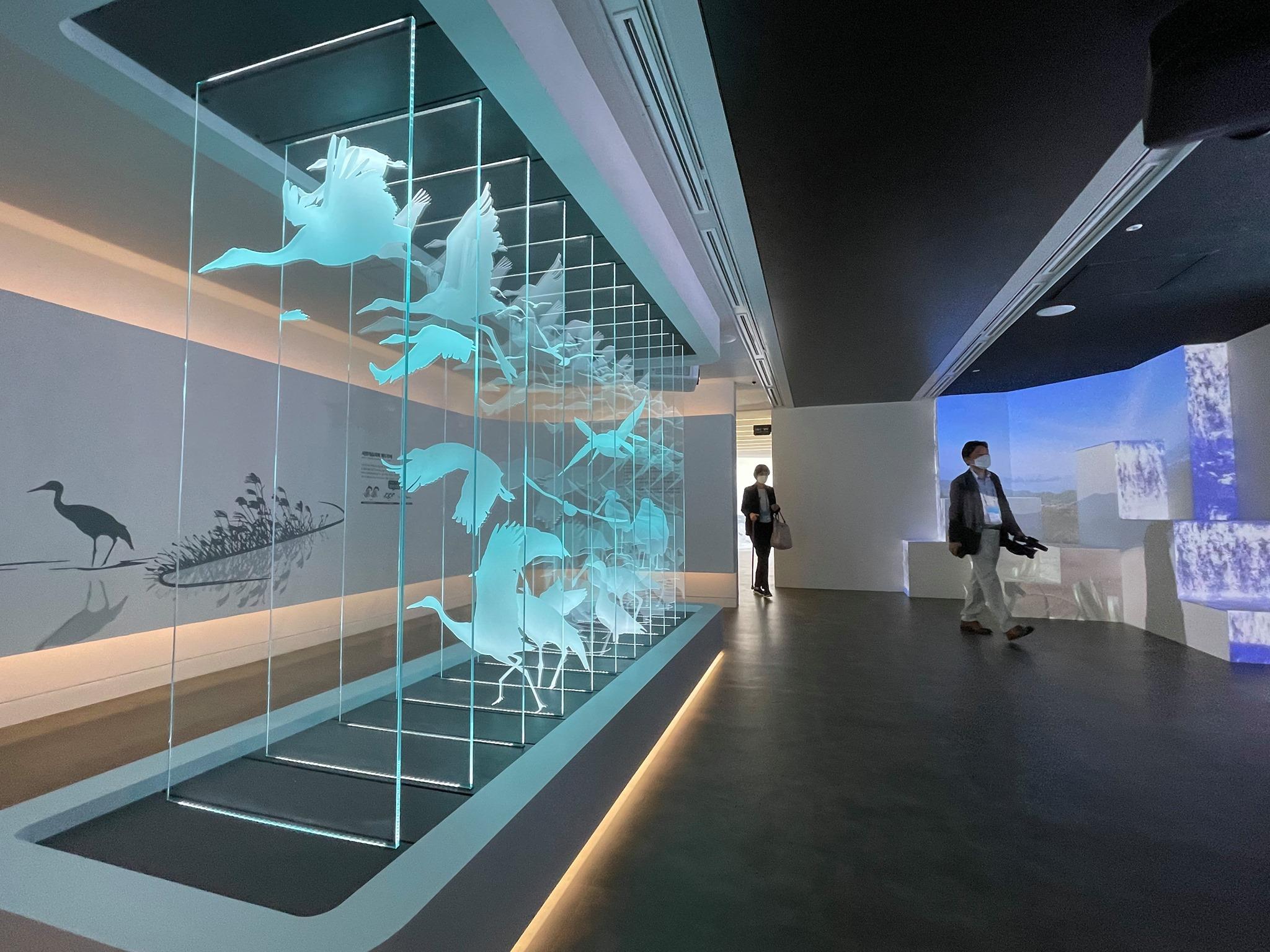
A display of water fowl. Photo: Andrew Salmon/Asia Times
The newly refurbished complex cost 40 billion won ($33.7 million) and was funded largely by Gimpo, though some support was provided by the central government. A further 5 billion won is being invested to upgrade access, including for the disabled, Gimpo Mayor Jung Ha-young told foreign reporters who attended Tuesday's conference.
The lower section of the complex comprises exhibition halls and galleries.
Historical scenes and characters are displayed alongside images of the fish, mammals and wildlife native to the area. A faux train carriage, equipped with VR headsets, takes visitors on a virtual tour of the historical city of Kaesong in North Korea – which on clear days, can be seen to the center's northeast.
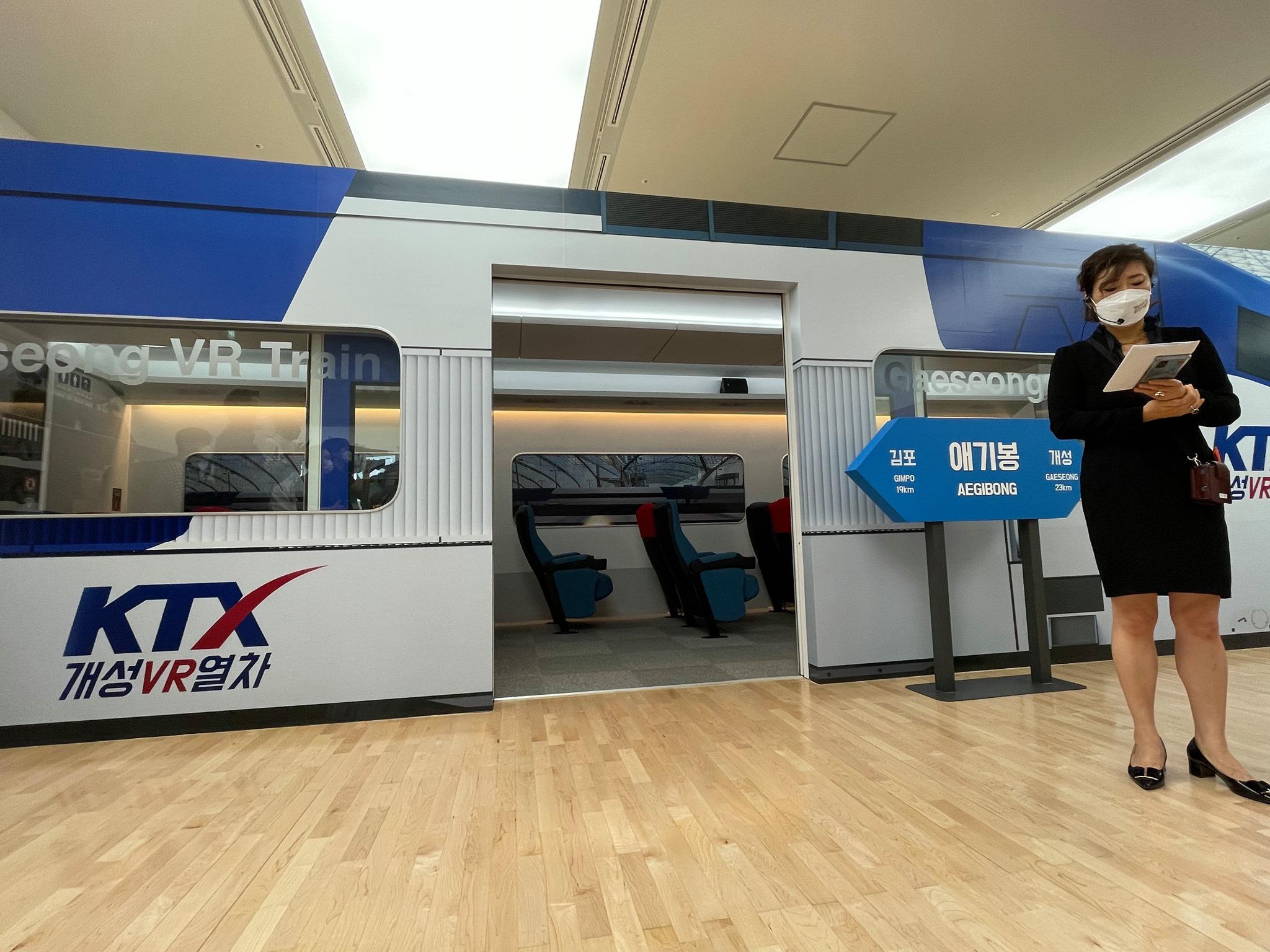
Take a train tour to the North Korean city of Kaesong – a virtual tour, that is. Photo: Andrew Salmon/Asia Times
Hi-tech is in wide use. In a spacious enclosed gallery, outfitted with a light show, bright scenes of peace and unification run across the walls. LEDs are the primary display format, and a glittering electronic waterfall links floors. Even the coffee dispenser is robotic.
Naturally, there is a café and a giftshop. But there are also filmed interviews with oldsters discussing the hardships and tragedies they experienced as a result of conflict and division, and a Marine Corps monument. The standout features of the center, on its upper levels, are its observatory and outdoor decks, equipped with telescopes aimed at the North.

Coffee, by robot. Photo: Andrew Salmon/ A sia Times Reunification edutainment This is a place where“future generations” can learn about“peace and reunification” said Jung, who noted that a recent survey had found that 50% of young people had little interest in North Korea or in unification. Many cited costs, which are expected to be colossal.
While there is no process in place between the two Koreas for reunification, and the short term risks and costs are stratospheric, many consider the long-term outlook – assuming unification does, indeed, take place, which is by no means assured – to be excellent.
A casus belli would disappear from Northeast Asia and South Koreans would regain their long-blocked road, rail and pipeline access to the Eurasian continent. South Korean conglomerates would have a massive national infrastructure to rebuild. The North's 25-million strong populace would provide a new and more youthful workforce than the fast-aging South. The region and the world would have an entirely new market to develop and integrate.
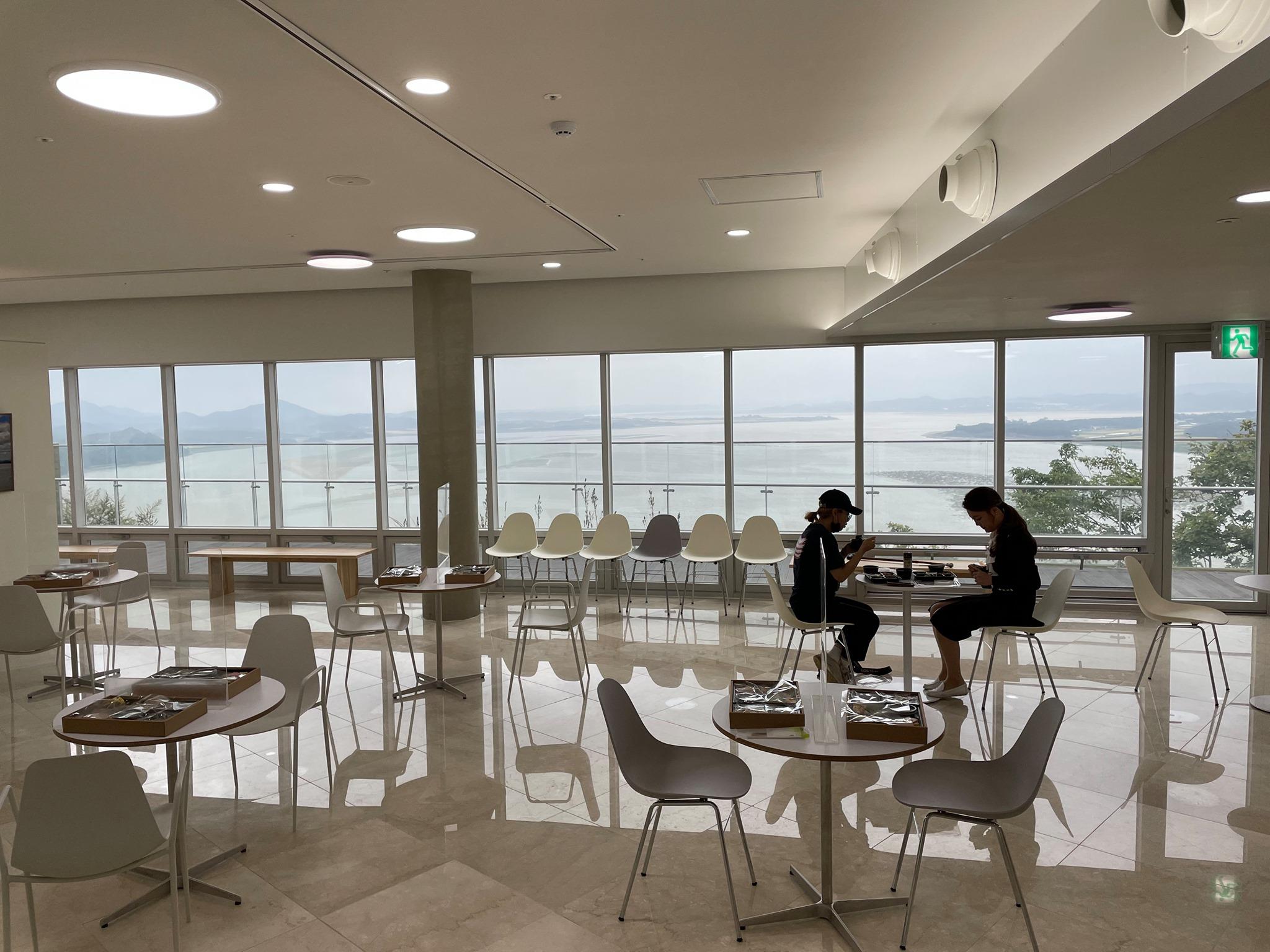
South Korean cafe, North Korean views. Photo: Andrew Salmon/Asia Times
Given how surprisingly and swiftly Germany's reunification had come, Jung's aim of selling the pros to South Korean youth looks strategic.
German Ambassador to Korea Michael Reiffenstuel told Asia Times that while Germany“had had its moment of great luck” enabling reunification, the groundwork had been laid for decades.
Speaking at the conference, with tall windows overlooking North Korea at his back, Rieffenstuel noted that it had been critical for Bonn to win more than just national governmental buy-in from all parties. The benefits of reunification had also been promoted to regional governments and especially to West Germany's prosperous and comfortable citizens – many of who had been leery about the costs.
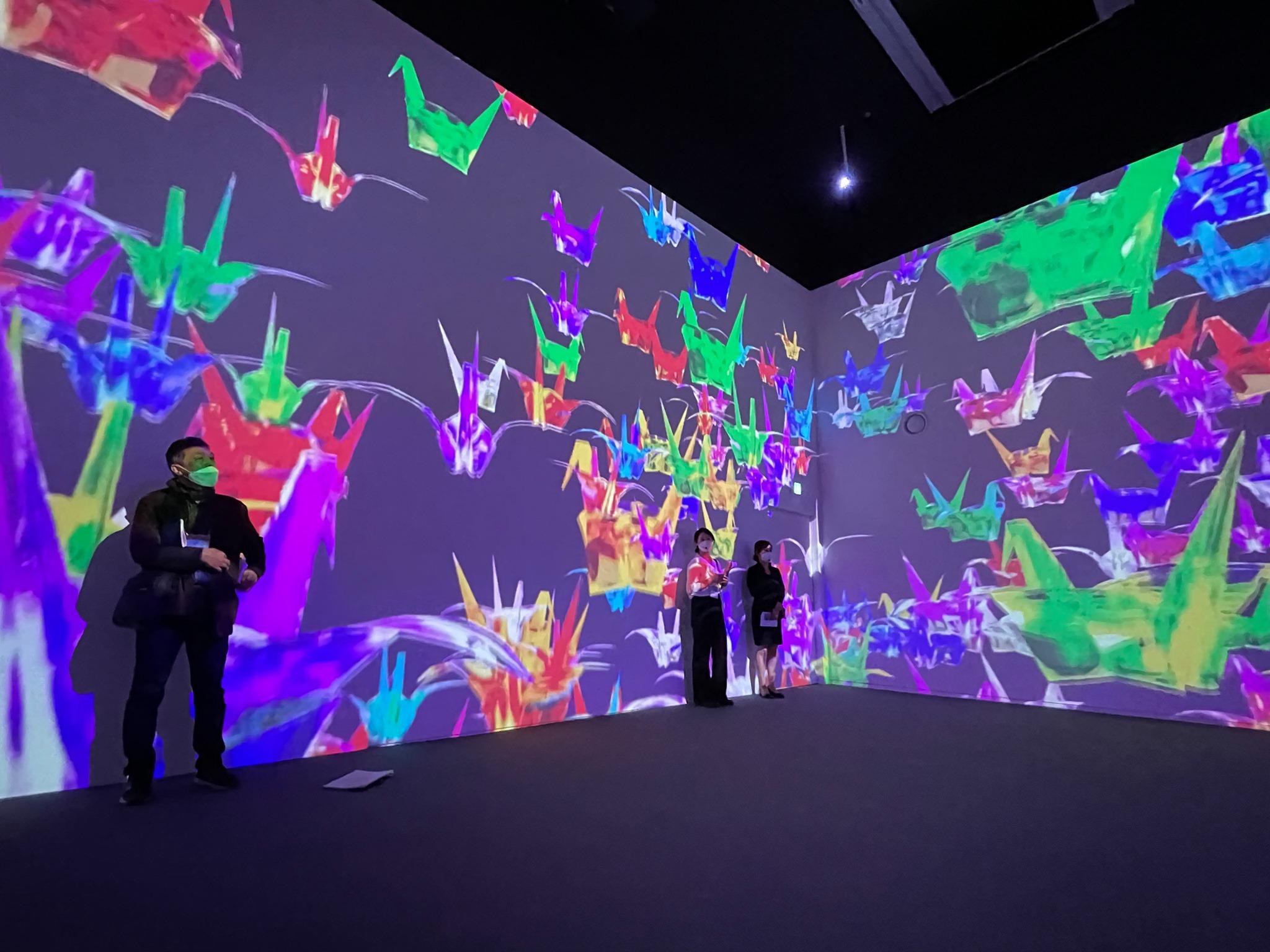
Animated, colored paper cranes – a symbol of peace – flutter across the walls of an indoor gallery at Aegibong. Photo: Andrew Salmon / Asia Times
Groundwork also needed to be laid in the external environment said EU Ambassador Maria Castillo Fernandez. She noted that the EU had provided a critical framework that enabled peaceful German unification at a time when other nations were wary of the outcome.
The original aim of the EU, she reminded the audience, was to ensure peace after two devastating wars. Economic interaction was a secondary goal.
The center, however, it not just about inter-Korean matters. It's strong eco-friendly messaging should also provide a lure for youth, noted another speaker.
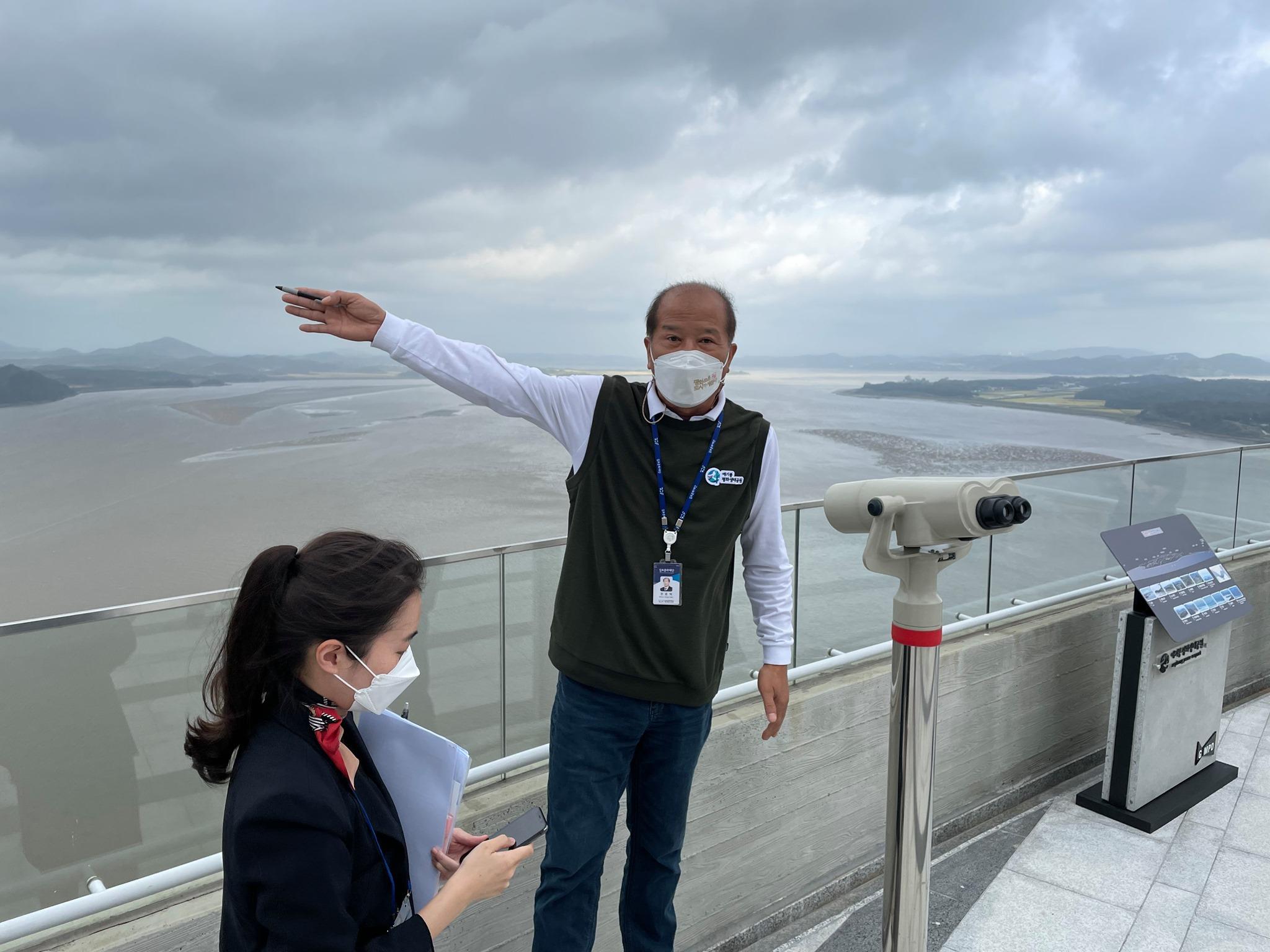
A tour guide at Aegibong gestures northward. Photo: Andrew Salmon / Asia Times Conflict tourism The drama and tragedy of conflict has always provided fecund source material for artists and entertainers. More recently, it has offered similar opportunities for tourism managers, too. Aegibong Peace Eco Park may be the most up-to-date facility along the inter-Korean frontier, but it is far from the only one.
Locations where South Koreans can gaze into the North are strung along the border, from east to west. While local officials told the conference there are 13 such facilities, Steve Tharp, a retired US military officer who writes books on the DMZ, told Asia Times that there are at least 17. Most are jointly managed by local county tourism departments and the military units stationed along the frontier.
“I think there is different value at each place, with a different clientele and different stuff,” Tharp said.
The locations which tourists in South Korea can visit to see the North include the iconic Joint Security Area in the truce village of Panmunjom, inside the DMZ. Another observatory lies just south of that: Imjin-gak, where youngsters can enjoy fairground rides and a modern art park, while their grandparents stare wistfully into the North.
Off South Korea's west coast, a lookout on the island of Gangwha offers unobstructed views into North Korea and spectacular, Yellow Sea sunsets. On its east coast, another observatory complex overlooks miles of splendid and utterly deserted white sand beaches that run cross the DMZ.
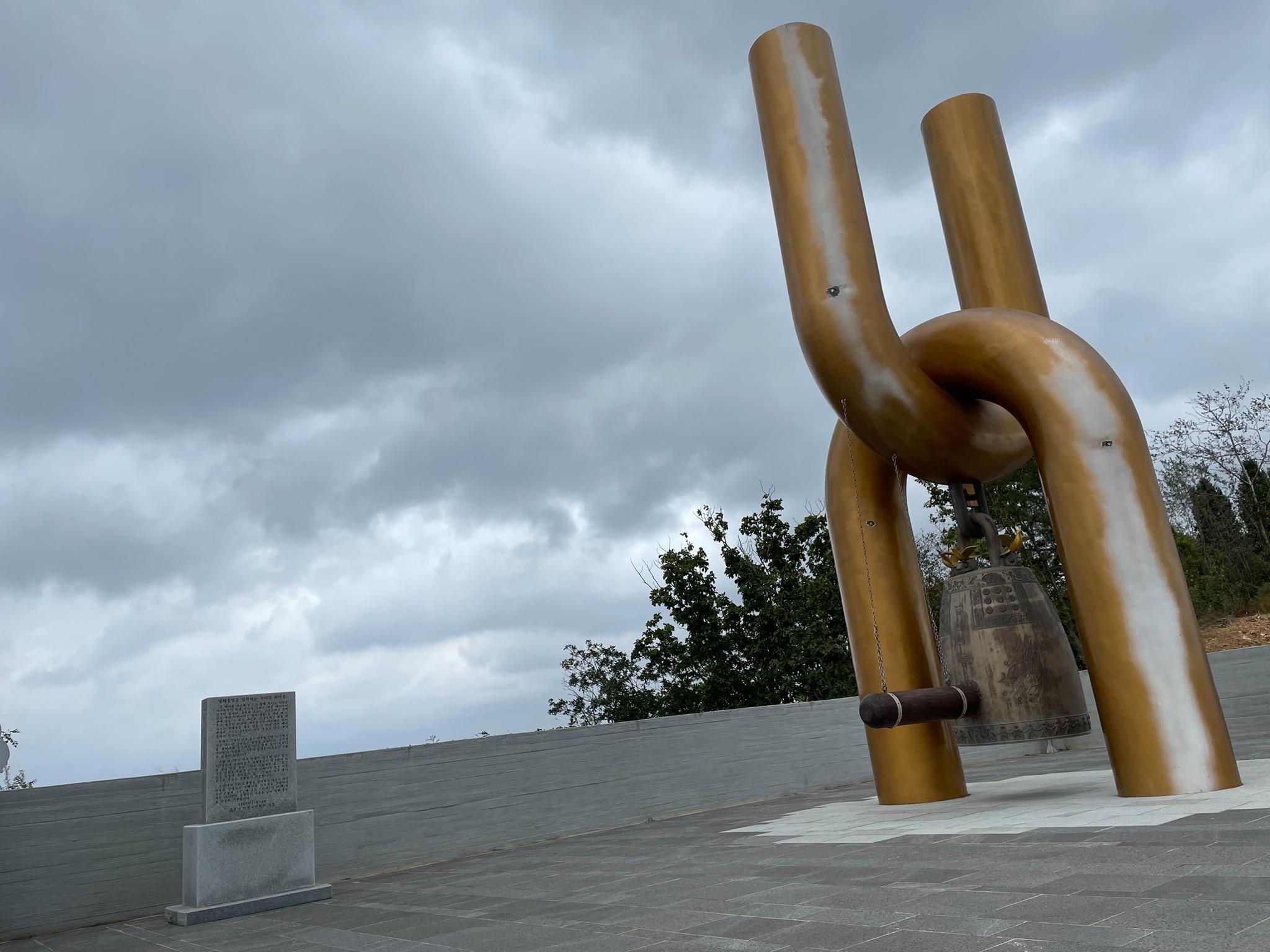
A UN sculpture recalls the US-led UN Command, the alliance which defended South Korea during the Korean War. Photo: Andrew Salmon / Asia Times
While nostalgic oldsters may wish to gaze into a barred and forbidden land, there are different reasons for younger South Koreans to visit these sites.
“For troops that are stationed up there, it's great for their families to come and visit,” said Tharp.“And if your family comes from Kaesong, say, then maybe you feel like you need to go up there to see it.”
But Tharp warned against falling prey to the giddy excitement that animates some people whenever inter-Korean engagement is raised.
“I think it is important for everyone to go up there and get some education on the war, and what is going on,” the retired lieutenant colonel and long-term South Korea resident said.“But people tend to see some dreamy outlooks in the future with North Korea that may not have any basis in fact. They should look at the current reality.”
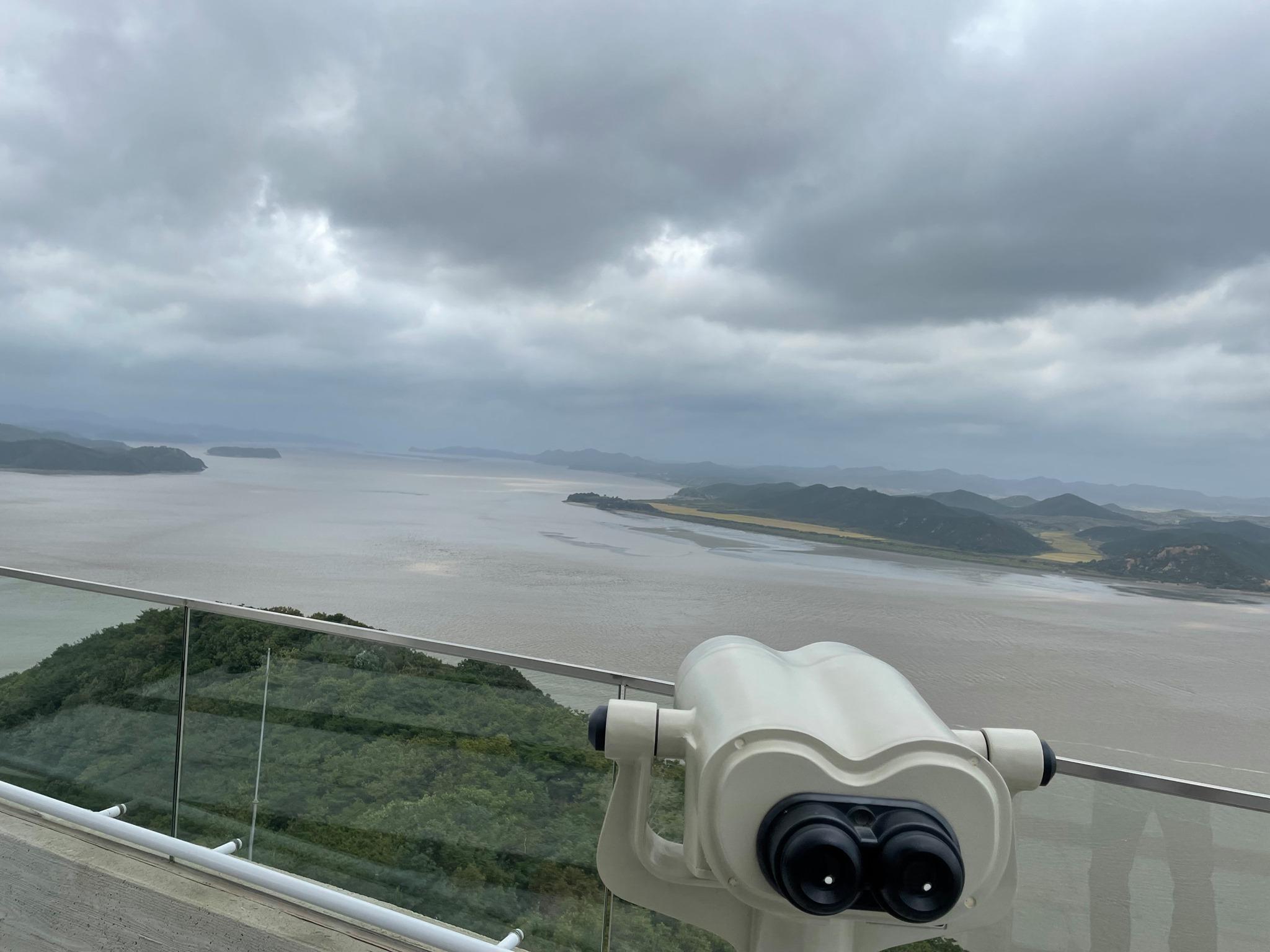
A different river bank – a different country. Photo: Andrew Salmon / Asia TimesMENAFN05102021000159011032ID1102920379